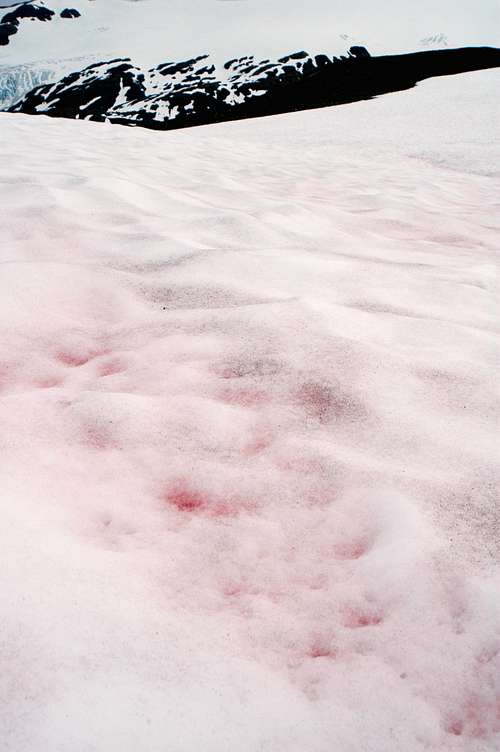Greetings
In this post, I will share about a natural phenomena that catches my interest. I was actually leaning toward Aurora Borealis or Meteor Shower, but I figure that it's too... common? I don't know.
Anyway, okay, Watermelon Snow. What in the world is that.
Well, it's a snow that looks like this:
Or this:
Or this:
As you can see, Watermelon snow are snow that looks either pink-ish, or white with a strike of blood-like red substances. Hence, other names like pink snow or blood snow. If you're wondering about where did "Watermelon" snow comes from, there's a rumor that the snow actually smells like watermelon. Oh, and there are a lot of pictures that the snow really, really looks like it was from a horror movies because the reds looks so much like blood that it's creepy. I decided not to put it in my blog. Feel free to search for it if you want though.
Anyway, how does this natural phenomenon happens?
Watermelon Snow is actually a nickname for a snow algae called Chlamydomonas nivalis, a species of green algae that contains secondary red pigments in addition to chlorophyll, It's cold-loving and thrives in freezing water.
 |
| What the Algae looks like |
Watermelon Snow is not exactly rare. It is pretty common during the summer in alpine and coastal polar regions worldwide, such as the Sierra Nevada of California. Here, at altitudes of 10,000 to 12,000 feet (3,000–3,600 m), the temperature is cold throughout the year, and so the snow has lingered from winter storms. Compressing the snow by stepping on it or making snowballs leaves it looking red.
Lastly, if the phenomenon is called "Watermelon" Snow, and it even has that faint smell of watermelon, then is it edible?
Well, it's not exactly appetizing for me, since I've seen enough blood-like watermelon snow to even wonder how does it taste like. But in case you're wondering, scientists had said that most algae are considered as edible. However, it is possible that snow algae might be contaminated by bacteria and toxic algae that are harmful to humans. Eating large quantities of watermelon snow has been known to cause digestive ailments, although the tolerance level of each person’s digestive system might be different. So, I wouldn't exactly recommend it to be your evening snack.
Anyway, this natural phenomenon has a beauty of itself. I couldn't exactly pinpoint what's the bad point of this phenomena though, other than potential diarrhea if you eat it to fulfill your daily ice cream dosage.
I really hope I could see it one day!
 |
| This is not even a Watermelon Snow. And I don't care whether it's photoshopped or not. It's cute. |
Bye!!
-Dian



No comments:
Post a Comment